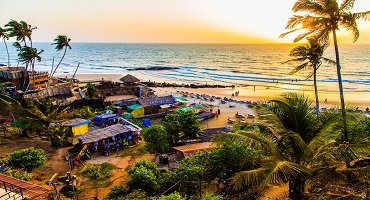By Flight
Though not the cheapest, flights are the easiest and quickest way to reach different parts of the country — but that doesn’t always mean a smooth journey. Geographically and climatically, flights to certain regions can be bumpy, such as when entering the magnificent fjords of Akureyri — one of three main domestic airports in the country. The other two are Reykjavík Airport in the capital and Egilsstaðir Airport in the east. Smaller airports and runways exist in other parts of the country such as in Höfn, Skaftafell and Mývatn, running mostly chartered and private sightseeing planes. The top airlines to travel within Iceland include Air Iceland Connect and Eagle Air.
By Car
Explore all of Iceland with complete abandon by driving across its jaw-droppingly scenic locations, using well-maintained roads that connect you to everything, from relaxing coastal towns to icy fjord regions. The Ring Road is the main highway of Iceland that literally goes around the whole island. A vast network of off-shoot roads connect to all other regions and communities. Car rentals are easy and popular but not always cheap, especially in the summers. One way to beat that is by renting a camper van instead and travelling with your accommodation! No matter which vehicle you choose, it’s important to be confident of driving internationally, especially here where many roads can be tricky due to the terrain and weather conditions. Winters are more challenging, so driving is most suited during spring and summer. Look out for animal crossings, especially the beautiful indigenous horses and sheep — not just as a safety warning but as one of the moments you’ll surely want to capture for your Instagram feed. If self-driving isn’t for you, private taxis or guided tours with transfers offer options.
Here are some other things you need to know about driving a car in Iceland:
- The country follows the right-hand-side road rules
- Seatbelts are compulsory for all passengers
- Off-roading is strictly illegal, to protect the country’s delicate environment
- Roads can get barren, so have a spare tire, enough fuel and the right emergency tools
- Car insurance is must for all rentals
- Many mountainous roads are closed on bad weather days and for the winter
- Hitchhiking and carpooling are both popular in Iceland, but not ideal for tourists
By Bus
While having your own car offers total flexibility, the local bus transport network is an ideal option for those staying longer at each destination and do not want the hassle of maintaining a vehicle, unlike serious trekkers, hikers and nature explorers. Strætó is the main operator running buses to select towns all year round, on different days of the week. This includes all stops along the Ring Road and other popular regions the Westfjords, Eastfjords and Snæfellsnes Peninsulas. It’s best to check the bus timings once you’re in Iceland as schedules are subject to change.
By Bicycle
Cycling around Iceland is becoming increasingly popular with time, especially with intrepid travellers or anyone seeking activity mixed with thrill. Bikes and mountain bikes can be hired from major towns in the country, however there are no biking paths and you’ll have to share the same roads as cars and other vehicles. Along with seasonal weather changes, this can make biking in Iceland rather challenging. Not that you’ll feel it when facing some of the world’s best views.
By Ferry
Being an island means water travel between different coasts and ports is a possibility, with Iceland offering year-round ferry services that includes room for vehicular transport so you can even take your car or bike to a completely different part of the country. Popular routes connect Stykkishólmur in the west to Brjánslækur in the Westfjords, Árskógssandur near Akureyri to the island of Hrísey, Landeyjahöfn in the south to the Vestmannaeyjar Islands.



















